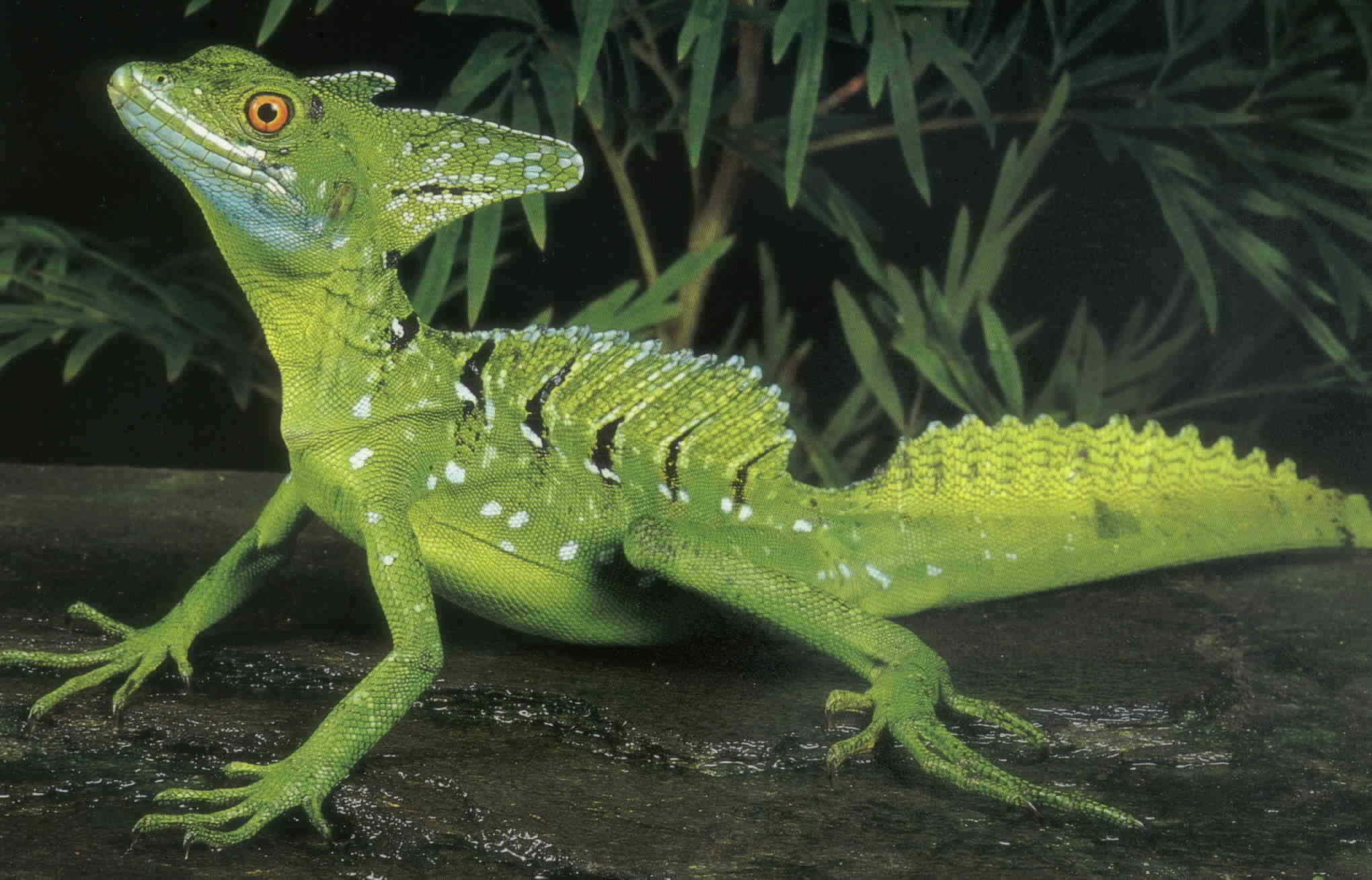
Looking as tall as possible
and expanding the chest is universally employed by human beings as a means of
intimidating an adversary, as witness the behavior of small boys. --Hans Hass (The Human Animal, p. 146)
Posture. 1. A vertically
looming stance in which the body "enlarges" through
extension of the limbs. 2. A primeval "pushup" intended to lift
the quadrupedal body higher off the ground.
Usage: The high-stand is an antigravity display used to show a superior, confident,
haughty attitude or mood. It is a forerunner of the aggressive pushup
used by some lizards, and of our own assertive palm-down cue as well.
Culture. "Whereas
high status communicators are generally relaxed in North America, in Japan they
assume stiff, erect postures with feet firmly planted on the floor . . ."
(Burgoon et al. 1989:194).
Sea origin. It is likely that paleocircuits for "standing tall" developed in sea creatures before animals set foot on land. Fossil evidence is lacking, but in living fishes, such as gobies, status and rank vary in proportion to physical body size. The very big dominate the merely large, who in turn dominate the small. Gobies and other piscines, however, may appear "bigger" through an array of nonverbal illusions. To loom larger, a goby stiffens and raises its fins, lifts its head, puffs out its throat, and flares its gill covers. Cichlid fish, e.g., erect vertical fins and turn to display a "bigger" broadside (see BROADSIDE DISPLAY). Puffer fish balloon in size, cod fish bulge their heads and jut out their pelvic fins to threaten, and mudskippers raise their bodies on vertical fins in aggressive displays.
On terra firma. In land animals, forelimb extension lifts the body's front end to more vertically imposing heights. Doing a pushup makes living iguanas and lizards, e.g., look "bigger" than they appear with their bellies lowered to the ground. The Australian frilled lizard rears and erects its frill, while the cobra rears and spreads its hood. Research on "Sociality, Stress, and the Corpus Striatum of the Green Anolis Lizard" (Greenberg 2003) confirms the fact that the anole lizard's pushup to a high-stand is mediated by brain modules of the basal ganglia.
Mammals. Mammals push up in aggressive stiff-walk postures. Bulls, e.g., take several stiff-steps to loom "large" before galloping ahead at full charge. Bears, coyotes, and wolves strut with a stiff-legged gait to carry their bodies higher off the ground. A dominant wolf stands over its submissive foe. Primates show dominance by straightening their legs and widening their arms. A gorilla, e.g., displays with a stiff-legged bluff charge. An aggressive chimpanzee rises to a bipedal stance, widens its bristling arms, and swaggers from side to side to seem "big." Rearing on the hindlegs is a posture directed by adult or young adult baboons at other baboons in the wild; it can prelude attack or escape (Hall and DeVore 1972).
Humans. To embody the vertebrate's natural weapon, sheer size, we
assume a John-Wayne stance, i.e., we stand tall, bristle, square our
shoulders, broaden our bodies with the hands-on-hips gesture, talk in deep tones, and toe-out
to military oblique. (N.B.: That the vertebrate eye
responds to changes in size makes it possible for different species to
understand each other's cues. Park rangers advise, e.g., that we stand
up and wave our arms to threaten mountain lions encountered in the
wild [see below, Warning signs]. As a human-to-human cue: "Wave your arms if you
need a lifeguard--this is an international distress signal, whether you are in
the water or on the beach" [source: San Diego Lifesaving Association, San
Diego Union-Tribune, July 4, 1998, E-1].)
U.S. politics.
Borrowing Winston Churchill's 1941 "V for Victory" hand gesture, Richard Milhous
Nixon extended both arms fully outward and upward, and gave the American people
two V for Victory hand gestures in his triumphant 1968 tickertape parade. This
manic version of the high-stand display later became one of Mr. Nixon's
trademark nonverbal cues (see also ANGULAR
DISTANCE). "Amid the din of a cheering crowd, the [i.e., Mr. Nixon's]
fingers up for victory also signals acceptance of tribute to a powerful and
confident leader" (Blum 1988:3-12).
Warning signs. In 1996, the
University of California at Berkeley put up a dozen 12" by 18" aluminum signs to
warn students of the dangers of nearby mountain lions. The signs recommend ". .
. that people raise their arms to make themselves appear larger to the lion,
and, if attacked, to fight back and remain standing" (Chronicle of Higher
Education, Sept. 27, 1996).
Neuro-notes. Paleocircuits mediating the high-stand display consist of small networks of spinal-cord interneurons in charge of the muscle stretch reflex. These mini-networks mediate antigravity responses, i.e., the muscular contractions which automatically extend our limbs to keep us standing upright (without our consciously deciding to do so).
See also BASAL GANGLIA, REPTILIAN BRAIN.
YouTube Video: Watch this male fence lizard's jaunty high-stand displays of dominance.Copyright 1998 - 2016 (David B. Givens/Center for Nonverbal Studies)
Photo of double-crested basilisk (Basiliscus plumifrons; Costa Rica; picture copyright by Gail Melville Shumway)